#1956-57
Text
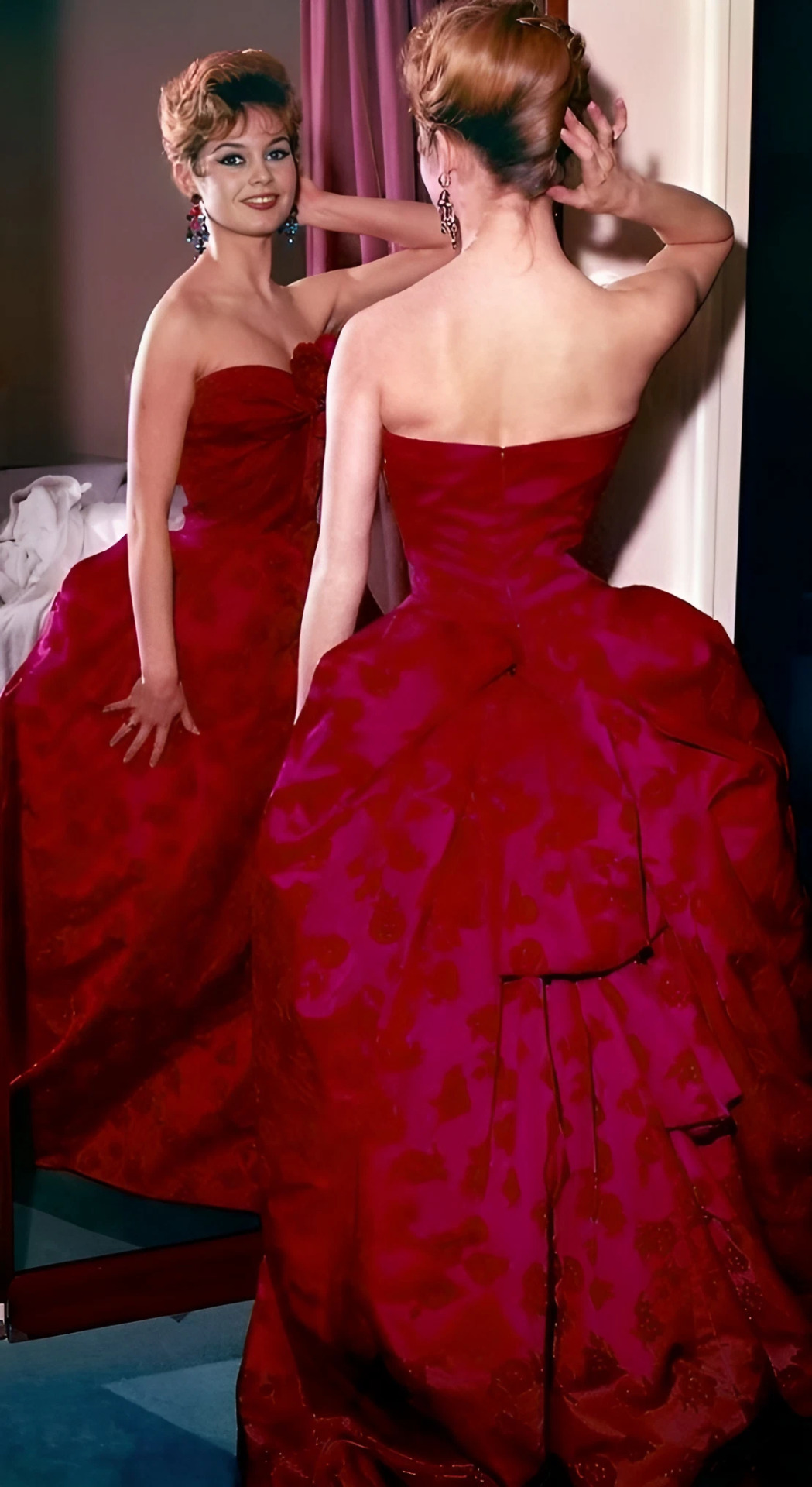

A rare photo of Brigitte Bardot in a Dior dress before attending a ball, 1957.
Christian Dior Haute Couture Collection Fall/Winter 1956-57. Brigitte Bardot wears the “Concerto” evening dress. "Aimant" Line.
Une photo rare de Brigitte Bardot dans une robe Dior avant d'assister à un bal, 1957.
Christian Dior Collection Haute Couture Automne/Hiver 1956-57. Brigitte Bardot porte la robe du soir "Concerto". Ligne "Aimant"
#brigitte bardot#french icon#french actress#bb#christian dior#collection haute couture#fashion 50s#1956-57#fall/winter#automne/hiver#ball gown#robe de bal#robe du soir#evening gown#red gown#concerto#ligne aimant
156 notes
·
View notes
Text
youtube
2 notes
·
View notes
Text
On 7 January 1957, Prince Philip, riding a Chilean mare, won the Sailor’s Race held in Stanley Harbor.


115 notes
·
View notes
Text
Could the 1956-57 Lincoln have saved a dying Packard? - Steve @IndieAuto
Stéphane Dumas has been displaying his broad knowledge of web-based sources of automotive history for quite a few years. As a case in point, back in 2015 Dumas posted a comment over at Hemmings that linked to a discussion about a proposed Packard based on the 1956-57 Lincoln platform.
A Studebaker Drivers Club discussion included a Richard Teague illustration of the proposed 1957 Packard (Golden…
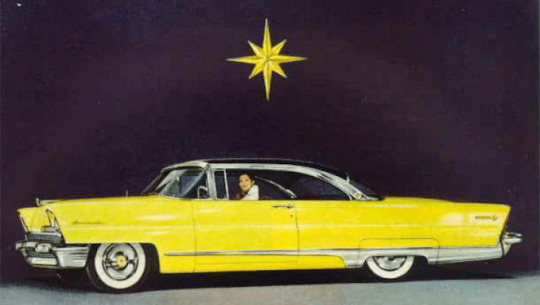
View On WordPress
0 notes
Text
A Well-Preserved Abandoned Time Capsule House
Along a scenic road lies this incredible time capsule house with everything left behind. This large home built in 1956 features interior design elements from the 70s including shag carpeting in the bedrooms, a carpeted wall in the primary bedroom, appliances from the same era, and even an Asian-themed tiki bar/room in the basement. There are several personal items left behind as well from clothing, to photos and even letters from the children to their father.

The Home was owned by a German man named Hans. He was born in 1923, and he married a woman named Emma at a relatively young age. Hans was a school teacher by profession, teaching at a nearby school. He was a hard worker and was always furthering his education, as seen in several certificates found throughout the home. I believe he also had a small business selling renewable energy sources such as solar panels and wind turbines which he operated out of a separate part of the home. In his spare time, he liked to build and maintain his elaborate model train display in the basement.
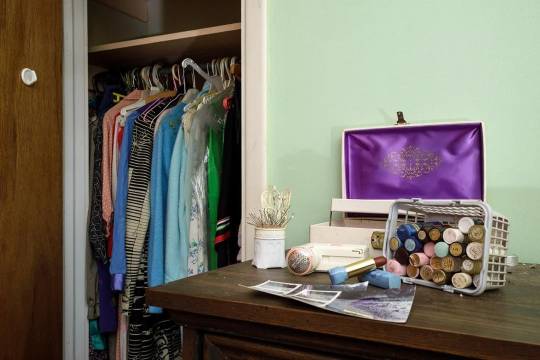
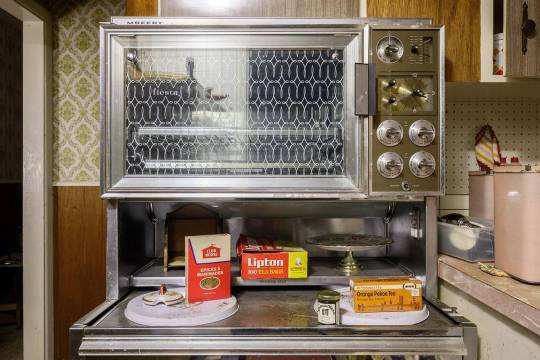
He and his wife Emma enjoyed travelling and did so often until finally deciding to settle down. They had two children, Adele and Michael. They led an idyllic life for a few years but as time went on cracks began to emerge in the marriage. Emma decided it was time to leave and she moved with their children a couple of hours away from Hans.

Hans moved on and met a woman named Ida. Michael would occasionally send letters to Hans and from what I read, they did not have the best relationship. Michael being very religious, was always optimistic they would see each other during the holidays but from the sounds of the letters, that likely didn't happen. He was also upset about the fact that his father did not call him regularly. In one of the letters Michael said that after a phone call with his father, he was scared to death of visiting him after speaking his mind. Emma did not get along well with her ex husband and this likely played a role in the ability for the children to visit with their father as well.
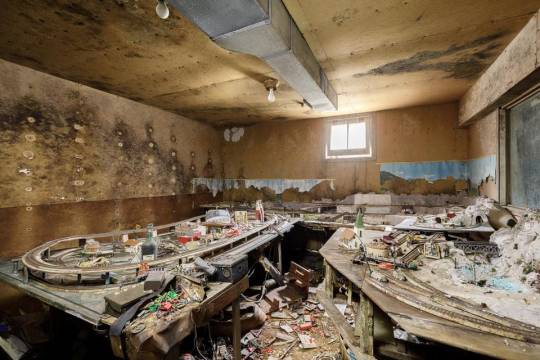

Life continued on for both families until Hans passed away in 1980, he was only 57. Ida lived in the home until at least 1983 as seen in a handwritten letter from Michael addressed to her. At some point after that, Ida moved to Pennsylvania since she likely had friends/family there. The house has sat abandoned ever since.


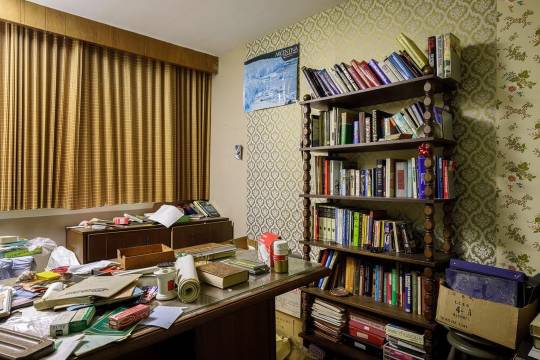
Emma passed away a few years ago but I have not been able to find out any information about Adele. Michael however spent a lot of time in school training to work in a religious-related field. He had inherited a strong work ethic from his father, reminiscing about how Saturdays were work days and how that impacted his life. He has since found a very rewarding and successful career in religion.
source - video of the house
139 notes
·
View notes
Text

Kunsthalle (1956-57) in Darmstadt, Germany, by Theo Pabst
71 notes
·
View notes
Text
Unconventional warfare constituted the US method of choice to weaken or overthrow unwanted governments. It was designed to “roll back” governments deemed detrimental to US interests and those of global capital. Such strategies depended almost entirely on para-institutional complexes. US agencies liaised with and coordinated complexes of local collaborators, insurgents, militias, “secret” armies, mercenaries, private air-military contractors and other para-institutional forces to influence the political and economic orientation of foreign states. These efforts to weaken unwanted foreign governments or towards regime change extended around the world to countries such as Albania (1949–53), China (1949–60s), Burma (Myanmar) (1951–53), Tibet (1959–60s), Iran (1953), Guatemala (1954), Syria (1956–57), Egypt (1957), Indonesia (1957–58 and 1965), Iraq (1963), North Vietnam (1945–73), Cambodia (1955–70), Laos (1958–63), Cuba (1959–present), Chile (1964–73), Greece (1967), Bolivia (1971), Zaire (1975), Angola (1975, 1980s), Seychelles (1979–81), Libya (1980s), Grenada (1983), South Yemen (1982–84), Nicaragua (1981–90), (Afghanistan 1979–89), Fiji (1987), among others.
Andrew Thomson, Outsourced Empire: How Militias, Mercenaries, and Contractors Support US Statecraft
130 notes
·
View notes
Text

HRH The Duke of Edinburgh Painting on HM Yacht Britannia: Edward Seago, ca. 1956-57.
261 notes
·
View notes
Photo

Gerard Dillon (Irish, 1916-1971), The Dreamer, c.1956-57. Oil on board, 47½ x 71 in.
419 notes
·
View notes
Text

Chrysler Norseman 1956/57 Concept
333 notes
·
View notes
Text

US Vogue September 15, 1956
Patsy Pulitzer wears a "casual" beige and white felt hat, by Svend.
Patsy Pulitzer porte un chapeau "casual" en feutre beige et blanc, par Svend.
Photo Frances McLaughlin
vogue archive
#us vogue#september 1956#fashion 50s#1956-57#fall/winter#automne/hiver#svend#patsy pulitzer#frances mclaughlin gill
46 notes
·
View notes
Photo

Seydou Keita - Untitled (1956-57)
Source: Kobena Mercer - Travel and See: Black Diaspora Art Practices since the 1980s (2016: 162)
57 notes
·
View notes
Text
On 1 January 1957, Prince Philip and the rest of the crew aboard HMY Britannia crossed the Antarctic Circle.


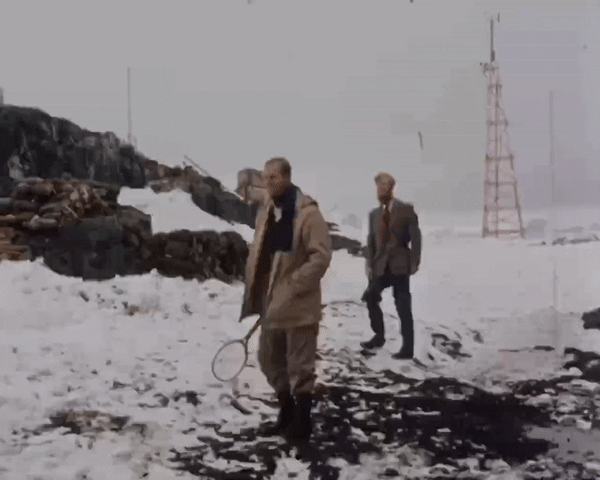

To commemorate this event, Prince Philip and the artist Edward Seago designed a lino-cut certificate.

83 notes
·
View notes
Text


Are you kidding me? This amazing 1956 mid-century modern home in Leesburg, Florida is only $719,900K? 3bds, 3.5ba, and this place is completely renovated and gigantic. I can't believe it's under $1M.

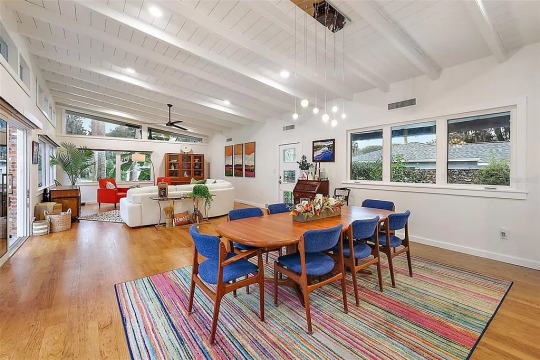

Huge open concept living/dining/kitchen combo.

This is beautifully done.




Most of the house opens to this gorgeous covered pool area.


The primary bedroom is huge and even has a fireplace.

Closet/dressing room.

Very nice en-suite.

Office/den.

And, here's a beautiful shower room.


Check out the enclosed breezeway in the middle of the house.


Bedroom #2 is gorgeous, too. It even has a brick fireplace. It's across the breezeway from the primary bedroom.

It must be a guest room, b/c not only does it have an en-suite.

But, it also has a kitchenette.

On the side of the house is an outdoor patio.

The guest house in the yard can also be used as an in-law suite or rental.

It's a few blocks from Lake Harris and is on a 0.3 acre corner lot.
82 notes
·
View notes
Text
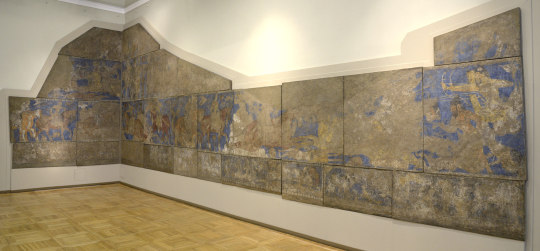
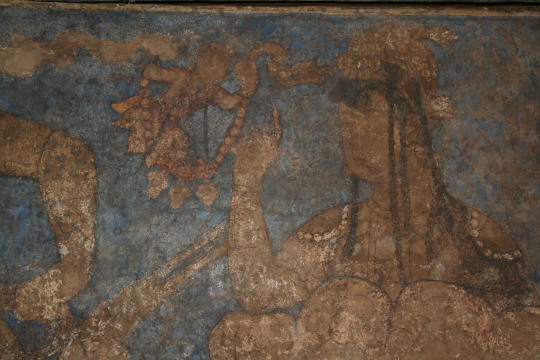





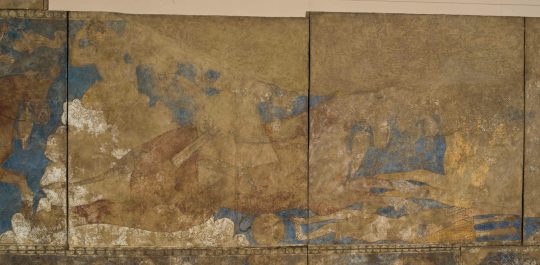

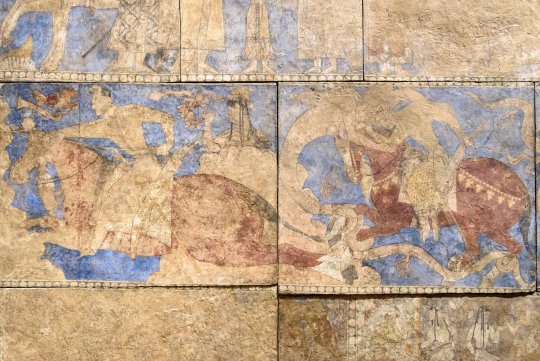
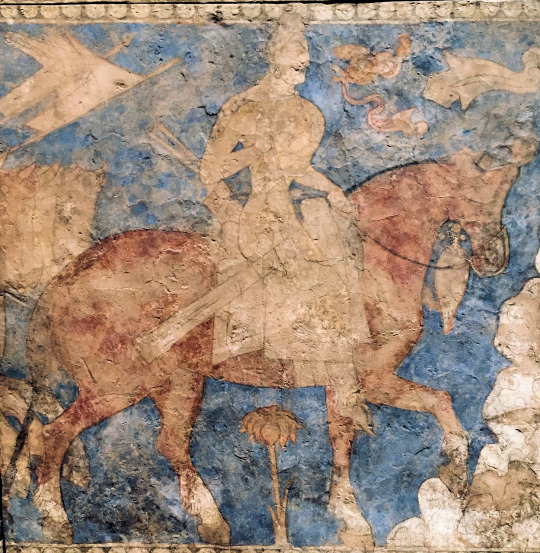




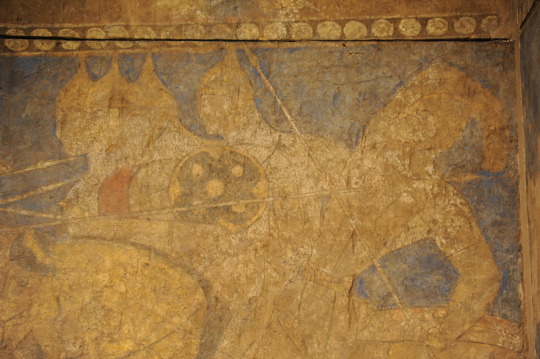
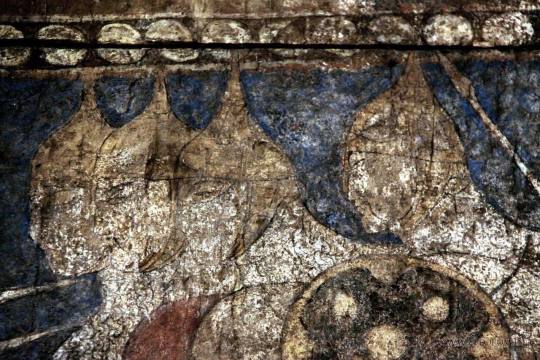
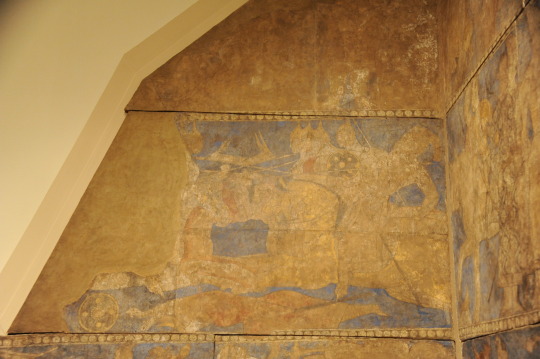


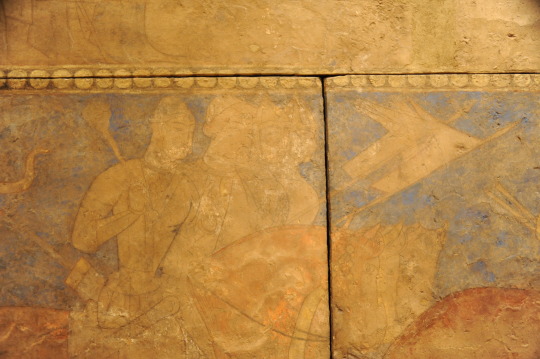


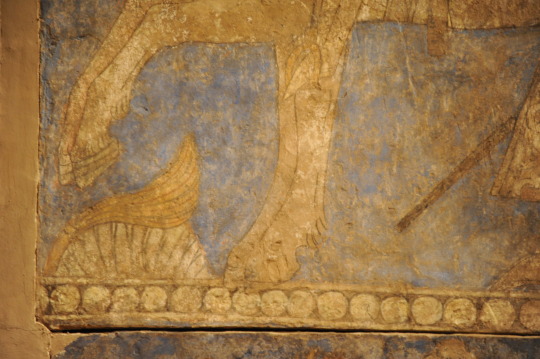


Panjakent Mural - The Blue Hall - Rustam Cycle, circa 740 CE. More images on my blog, link at bottom.
"Contrary to what one might expect, the impressive set of wall paintings known as the “Rustam Cycle” was not located in the hall of a royal palace, but in a house of average size in Panjikent, a small town sixty kilometers east of Samarkand . This painting cycle stands out among other excavated examples for its exceptionally well-preserved (and now, well-restored) murals, which can be dated to about 740. It is also, ironically, the last of the magnificent cycles to be painted at Panjikent; Fig. 1. The city’s ruler, Devastich, was killed in 722 and the city itself subjected to punitive Arab incursions. Despite this artwork and other evidence of Panjikenters resuming their way of life, the city was finally abandoned after the 770s.
Discovered in 1956–57 by archaeologist Boris J. Stavisky, the Rustam Cycle is the most famous painted hall of Panjikent. Named after its main figure, Rustam, a major hero in the great Iranian epic the Shahnameh [“Book of Kings”], it is typical of narrative cycles found at Panjikent as well as other Sogdian cities, such as Afrasiab and Varakhsha . Episodes are organized into different registers, each running horizontally along the length of the walls. Here, the two main registers contain the stories of Rustam’s exploits and are set between a lower tier, depicting scenes from fables and moral tales, and an upper tier, illustrating a religious subject, perhaps related to a family cult.
Two fragments of the Rustam story written in Sogdian have survived: one kept in the Bibliothèque nationale de France, the other in the British Library. Dated to the 9th century, they predate by 200 years the first complete version of the Shahnameh written in Persian by the poet Firdowsi."
-The Smithsonian, Julie Bellemare and Judith A. Lerner
#sogdiana#ancient history#history#pagan#antiquities#art#museums#frescoes#ancient art#paganism#wall murals#muralart#mural#ancient
62 notes
·
View notes


